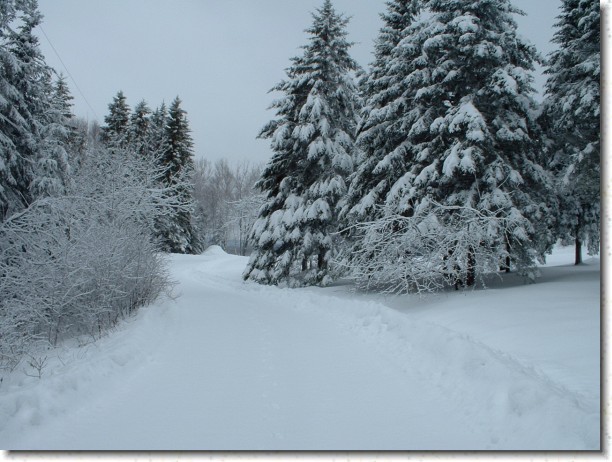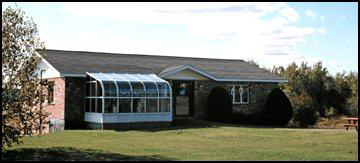- Category: Demographics
- Published on 10 April 2006
- Hits: 12203
Town of Castle Hill |
|
Castle Hill was originally known as Township 12, Range 4; settlers came as early as 1843. Castle Hill has prime forest, good farm lands, a 1,341 foot mountain and a river. The Aroostook River winds its way through timbers and meadows. The early surveyors made a large structure atop a hill which created the impression of a castle. At this position, areas could be viewed for miles; this is how and why the town was named Castle Hill. In 1843, General Jabez Trask settled along the area known today as the State Road. The fishermen in that area called it "Trask Landing", and it was also known as "The Ledges." The Aroostook River runs through the northwestern portion of the area. James Porter from New Brunswick and Robert Porter settled there in 1850. News of the opportunities in Northern Maine spread after the Civil War. Land grants were offered by the militia at very reasonable prices. Hotels, post offices, and schools were established as more settlers came to the area. Herbert Smith became an owner of what became known as the Smith Hotel. Henry Tilley built a meeting place in Castle Hill. It was the location for the local post office, and he became clerk and postmaster. Micajah Dudley and his sons settled on the Dudley Road. Along with farming the Dudleys' grew apples and plums. Deacon T.K. Dow and J.P. Roberts also settled on the Dudley Road. Charles Dow, son of T.K. Dow was a physician. Farm land was cleared by John Waddell on what became known as the Waddell Road; his son became the first minister in Castle Hill.
Box socials, climbing Haystack Mountain, and town meetings were the social events at that time. The Box social involved a young lady making a special box containing sandwiches and goodies. The auctioneer would auction off the box to the highest bidder. The highest bidder got a chance to have lunch with the young lady. The scenery was always worth the climb up Haystack Mountain as well. Castle Hill became incorporated in 1903, and a Grange was built for town meetings and social gatherings at around the same time. In 1910, Castle Hill's population was 563. The salaries for teachers were $7.50 - $12.00 a week. By 1920, however, more jobs became available and salaries increased, teachers were paid an annual salary up to $325.00. The 1930's brought depression, and radios were scarce. The decreased farm production caused many people to leave the area. Even the batteries for radios were expensive; therefore, news often traveled by word of mouth. Many men worked in the woods during the wintertime to supplement their income. Logging was often dangerous work, it involved driving the logs on the high water to the Aroostook River and then to one of the three existed sawmills. Phineas Ellis was the first town manager of Castle Hill. The population at this time was approximated to be 633. During World War II, many young men joined the military either by draft or by volunteering. Franklin Porter was the first to be killed from Aroostook County. With the War ending, life returned to normal; however, the population changed to 436. In the 1960's, the population was 554. In the 70's, it decreased to 519. In 1958, Castle Hill joined with other towns to form Maine School Administrative District No. 2. After much difficulty, Castle Hill broke from this District and joined with MSAD #1 in 1961, where it still remains. A planning Board was formed in 1973 to guide Castle Hill in development; with completion of the Comprehensive Plan in 1980, however, this was never approved. The population of 449 was about at its lowest in the 1990 census. This was partially due to migration of the young generation to attend college or opportunities for employment. Various Ordinances were adopted after 1990; there were agreements for sharing general, administrative, and departmental expenses with Mapleton and Chapman. The Floodplain Management and Land Use Ordinances were also passed. Castle Hill still remains a picturesque area, and with careful planning, Castle Hill's natural resources will continue to be protected for future generations. |
|


 Town of Castle Hill
Town of Castle Hill  Castle Hill became organized in April 1860 as a plantation. In 1897, the population was 546. The schoolhouses were built to accommodate the students and to provide them with the basic needs through the eighth grade year. As they improved on the buildings, windows were placed on one side with the desks on the same side in order to take advantage of the light from the windows. Insulation was not in use at this time; heat was from a wood-burning stove. Teachers did not always stay long because of the small salary. Many a housewife filled in between hiring teachers. Kerosene lamps were also used to warm up the schoolhouses. If a family had enough money to pay tuition, the student could go to Presque Isle High School. Due to the distance, however, it also required room and board. Because of the tuition and distance, participation by students was not always an option.
Castle Hill became organized in April 1860 as a plantation. In 1897, the population was 546. The schoolhouses were built to accommodate the students and to provide them with the basic needs through the eighth grade year. As they improved on the buildings, windows were placed on one side with the desks on the same side in order to take advantage of the light from the windows. Insulation was not in use at this time; heat was from a wood-burning stove. Teachers did not always stay long because of the small salary. Many a housewife filled in between hiring teachers. Kerosene lamps were also used to warm up the schoolhouses. If a family had enough money to pay tuition, the student could go to Presque Isle High School. Due to the distance, however, it also required room and board. Because of the tuition and distance, participation by students was not always an option. Central Aroostook Chamber of Commerce
Central Aroostook Chamber of Commerce Castle Hill
Castle Hill